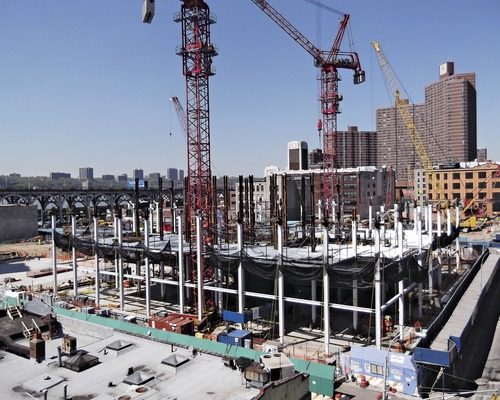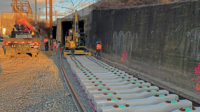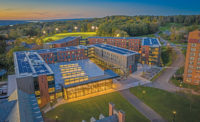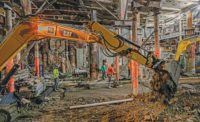The bustle across Columbia University's emerging Manhattanville Campus is offering a rare window on a mega-development that has not only reshaped a neighborhood but has also become a showcase for innovation. "Top-down" construction, double-skin facades, a first-ever LEED designation and even sweeping noise mitigation are making the $6.3-billion campus notable for more than its massive 6.8-million-sq-ft, two-decade scope.
The development—spanning 17 acres of Manhattan mostly bounded by 125th Street, Broadway, 12th Avenue and 134th Street, just blocks from the main Morningside Heights campus—broke ground on infrastructure work in 2008 and has progressed unconventionally since then.
The biggest departure has involved the project team —led by a joint venture of Lend Lease and McKissack Group, along with Mueser Rutledge as foundation and geotechnical engineer—working below grade and above grade on the first three buildings all at once. The two-pronged approach grew from the site's difficult subterranean features, says Philip Pitruzzello, vice president for the campus development effort in Columbia's facilities and operations department.
"The 125th Street corridor out to the Hudson is an area that used to be an estuary, so there's a very high water table and the bedrock is very low," Pitruzzello says.
That led to the team excavating basements and foundations under the nine-story, 450,000-sq-ft Jerome L. Greene Science Center; the 50,000-sq-ft Lenfest Center for the Arts; and a 60,000-sq-ft central utility plant while simultaneously erecting steel for those structures.
The linchpin for the dual effort was first finishing a "bathtub" perimeter foundation and slurry wall system to keep water out, and then drilling deep 8-ft-dia caissons for columns to support a slab on which structural steel rose, says Steven Sommer, senior vice president and principal in charge of Lend Lease Americas. The team even topped out on Greene in October 2013, several months before it "bottomed out" on the building's foundations with the final slab pour in February 2014.
"Top-down is widely used in Boston and in areas that are prone to a high water table," Sommer says. "It saved probably in excess of a year on the overall schedule."
Long Road
The troublesome underground features had curbed high-density development in the area, but Columbia's long-term institutional perspective made the effort worthwhile, Pitruzzello says.
But the obstacles went well beyond foundation issues. One was assembling the site via property acquisitions, and in some cases, through eminent domain by the state government after a 2010 ruling by New York's top court that dismissed a lawsuit challenging the process.










Post a comment to this article
Report Abusive Comment